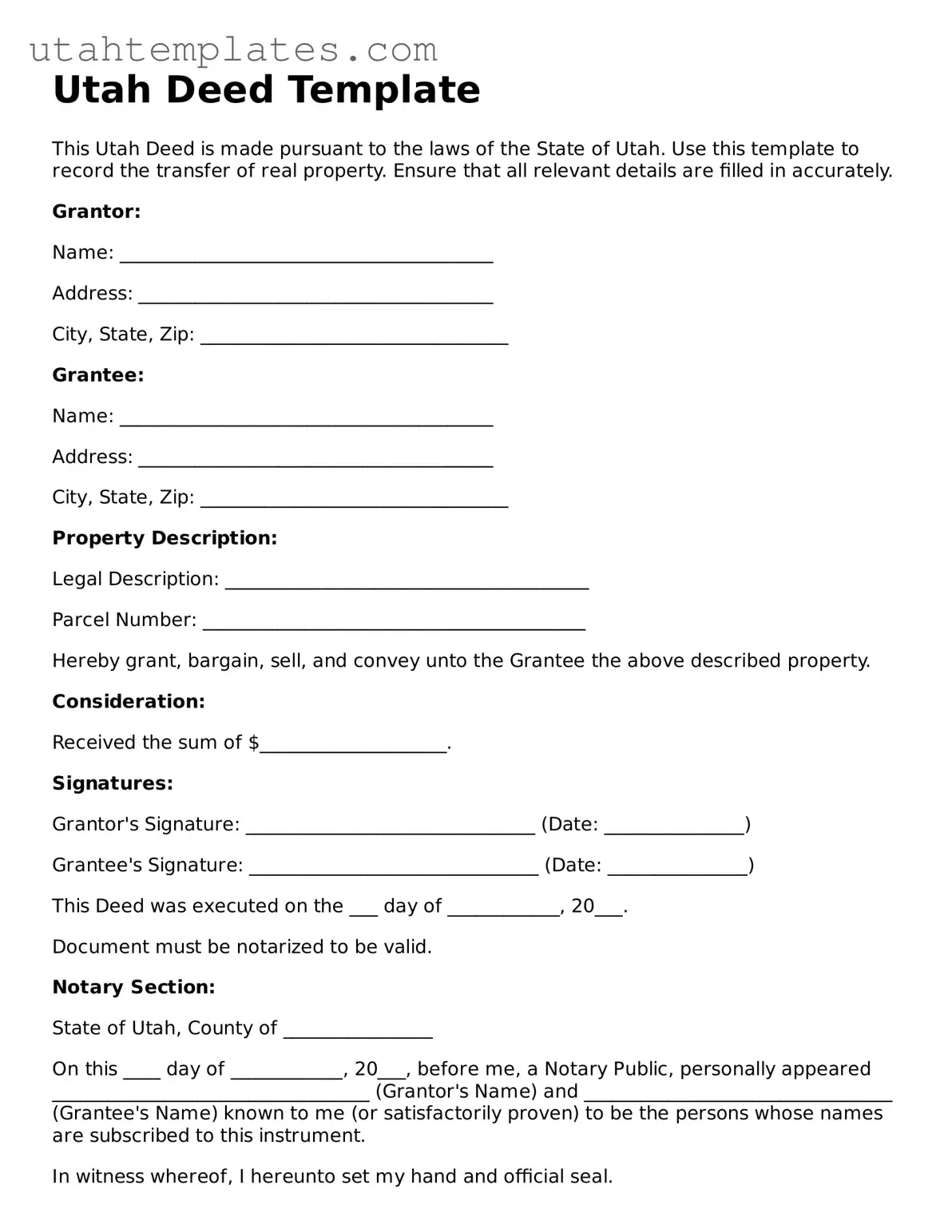Utah Deed Template
This Utah Deed is made pursuant to the laws of the State of Utah. Use this template to record the transfer of real property. Ensure that all relevant details are filled in accurately.
Grantor:
Name: ________________________________________
Address: ______________________________________
City, State, Zip: _________________________________
Grantee:
Name: ________________________________________
Address: ______________________________________
City, State, Zip: _________________________________
Property Description:
Legal Description: _______________________________________
Parcel Number: _________________________________________
Hereby grant, bargain, sell, and convey unto the Grantee the above described property.
Consideration:
Received the sum of $____________________.
Signatures:
Grantor's Signature: _______________________________ (Date: _______________)
Grantee's Signature: _______________________________ (Date: _______________)
This Deed was executed on the ___ day of ____________, 20___.
Document must be notarized to be valid.
Notary Section:
State of Utah, County of ________________
On this ____ day of ____________, 20___, before me, a Notary Public, personally appeared __________________________________ (Grantor's Name) and _________________________________ (Grantee's Name) known to me (or satisfactorily proven) to be the persons whose names are subscribed to this instrument.
In witness whereof, I hereunto set my hand and official seal.
Notary Public Signature: _________________________
My Commission Expires: ______________________
